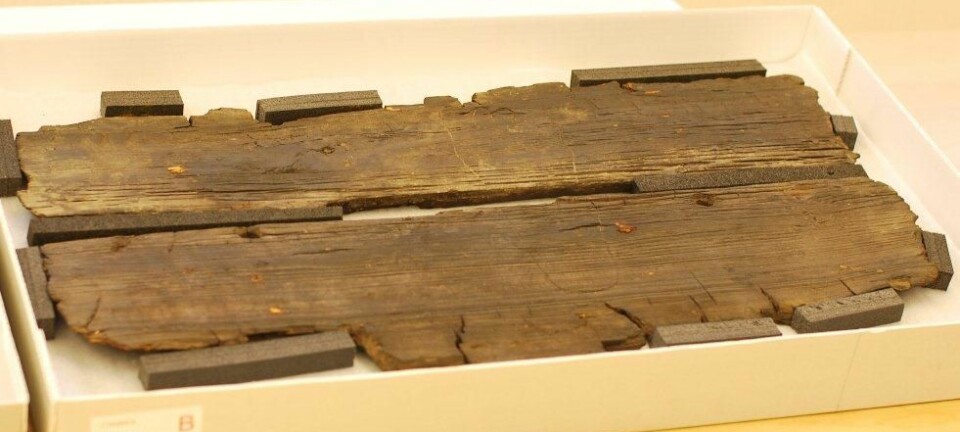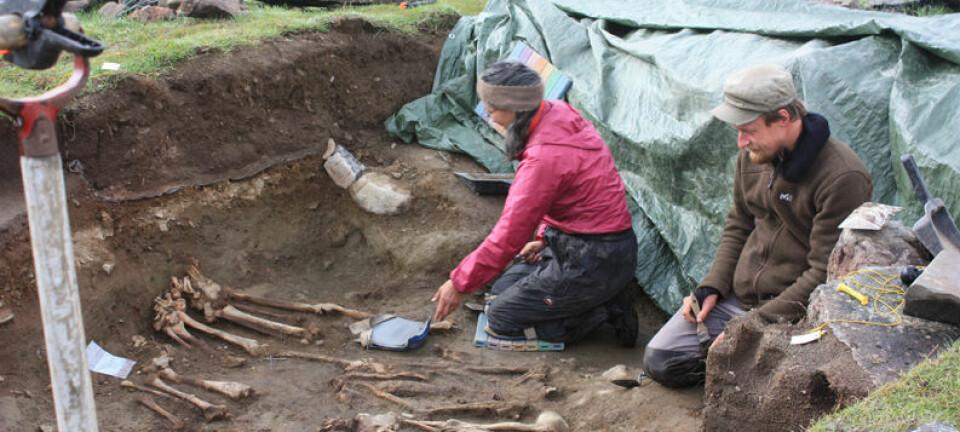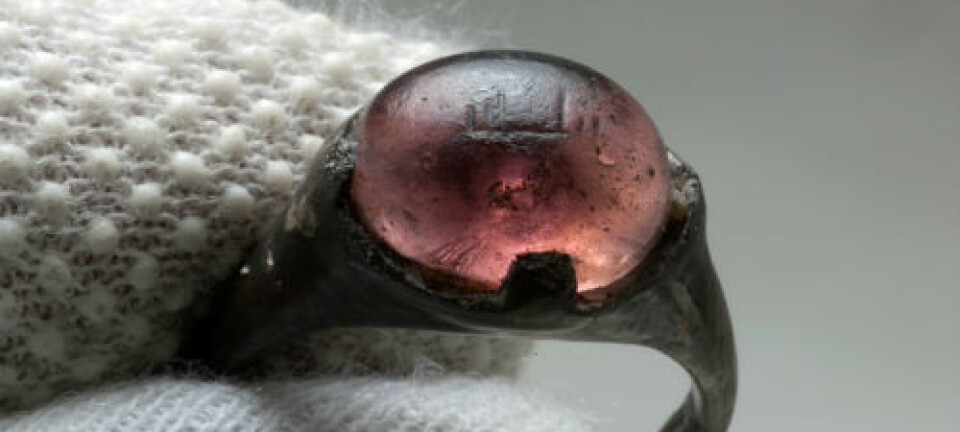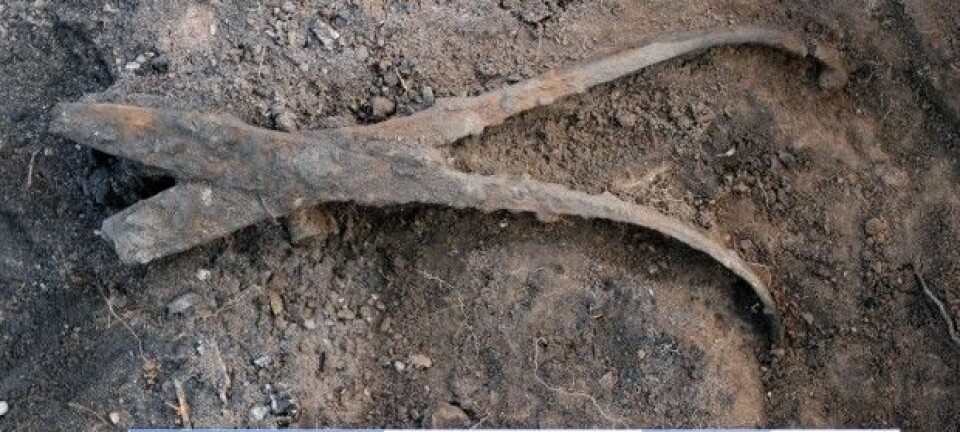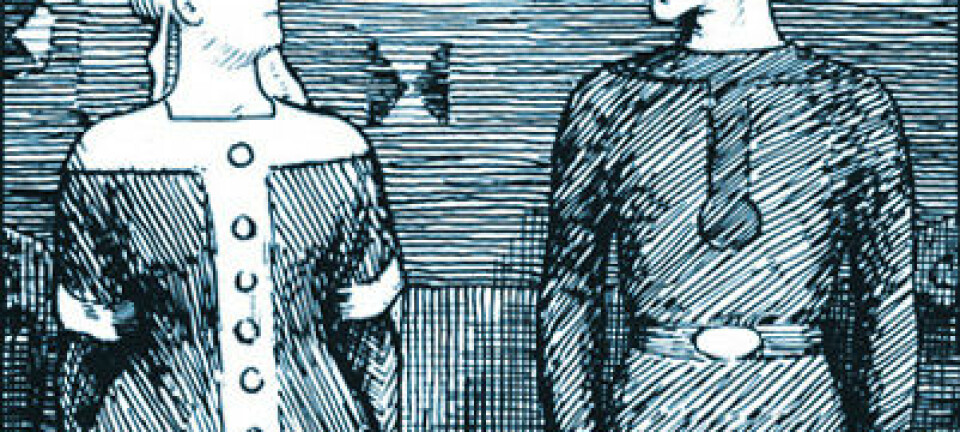See where the Vikings travelled
Use the interactive map to find out where the Vikings travelled to and how they traded and plundered in everything from spices to slaves.
You can see a larger version of the map here.
The Vikings have gained a reputation as bloodthirsty warriors, but they were also well-travelled traders. In this interactive map you can see where the Vikings travelled to, and how they traded and raided.
Click on the map above to learn more.
Sails allowed the Vikings to travel far and wide
A large piece of fabric changed European history forever and transformed the Scandinavians into well-travelled Norsemen. Sails made it possible for the Vikings to enter the world of trade and war.
Danes, Norwegians, and Swedes of that time -- around AD 700 to 1050 -- also travelled by sea. We know this because Iron Age people living in Sweden are known to have navigated down Russian rivers. But sails meant they could travel faster and cover longer distances, even on the high seas.
"Viking Age people knew about sails, at least since the birth of Christ, because they had contact with the Romans who had sails on their ships. But it is not until around the seventh and eighth century that we see the sail introduced in Scandinavia," says Dr Morten Ravn, an archaeologist and curator from the Viking Ship Museum in Roskilde, Denmark.
"We don’t know why they didn’t have sails earlier, perhaps they just chose not to use it" says Ravn, who believes that the Norsemen must have known about the use of sails in the seventh century.
With the sail began a historical period when the Norse reached all the way down to the Caspian Sea, Gibraltar, Iceland, Greenland, and America.
Missing history of Norse sailing
According to Ravn, researchers know little about the use of sails and maritime activities in the Nordic region between the fourth and eighth centuries. The only thing we know about ship history in Denmark during this period is based on a boat found in a bog in Nydam, Southern Denmark, in 1863.
"We do not know what was happening in between the time of the Nydam society’s boats and ships of the third and fourth century AD which were exclusively propelled by oars, and the seventh century where we begin to find pictorial depictions of ships. We cannot rule out that at some point we will find a ship from the year AD 500, but right now it is one of archaeology’s great questions," he says.
The Nydam boat is 23 meters long and 3.5 meters wide. It is clinker built, a technique where the edges of hull planks overlap and planks are joined end to end into a strake. This was developed in northern Europe and successfully used by the Norsemen, and it represents a step in evolution in shipbuilding between the sewn plank boats and the new Viking ships.
During the Viking Age, they developed different types of ships for different purposes -- either for crew, food, or merchandise.
Some ships were built for navigating along coasts and rivers, whereas the ships that went to England, Iceland, Greenland, and America were likely to have been large oceangoing vessels that could carry up to 80 people or a large amount of cargo.
Commerce, trade and raids
The Viking ships had to carry many men on their great conquests, such as the raids in England.
But the reputation of the Vikings in popular culture as wild and bloodthirsty men is a little too simplistic.
People living in the Viking Age were farmers, but they would also venture out to travel as Vikings and look for riches. On their travels, they would trade with the locals, but also raid, pillage, and take slaves back home. One day they would be peaceful traders, the next day brutal pirates.
"Having oars on the ships meant that they could enter a country quickly and also make a fast getaway, even under unfavourable sailing conditions. The essential characteristics for what we now call a 'hit and run attack'," says Ravn.
Today, we know of the Viking travels from archaeological finds, such as tombs and settlements, where relics of Viking merchandise are found.
Monks, Arabs, and medieval writers all spoke about the Vikings travels
Written sources indicate that Vikings travelled, traded, and raided, throughout most of Europe.
The annals from the Franciscan monastery of St. Bertin in 841 AD describe how the Danish Vikings sailed down from the North Sea and entered the English Channel to attack Rouen, a town in Normandy, Northern France. The scribes tell how the Vikings raged and plundered, used swords and fire, destroyed the town, killed and enslaved monks and other townspeople, ravaged all monasteries and settlements along the Seine or left them terrified after taking their money as bribes.
The Icelandic sagas written in the Middle Ages are another example, and perhaps the most famous written accounts of the Viking travels. One tells the story of the Norwegian King Harald Hardrada and his travels to Miklagård (modern day Istanbul). He entered into service as the Emperor's bodyguard and returned home to Norway a wealthy man.
Vikings may have been to many other places
Whilst researchers have a lot of evidence for the fact that the Norsemen were well-travelled, they may have reached many other destinations that are so far not documented.
Researchers know that they sailed down along the Spanish peninsula and into the Mediterranean, so it is possible that they continued all the way down to the west coast of Africa.
The Vikings may also have been to other places along the North American coast than the L'Anse aux Meadow in Newfoundland, where archaeologists Helge Ingstad and Anne Stine Ingstad found the remains of a Viking settlement in 1960.
---------------
Read the Danish version of this article on Videnskab.dk
Translated by: Catherine Jex
